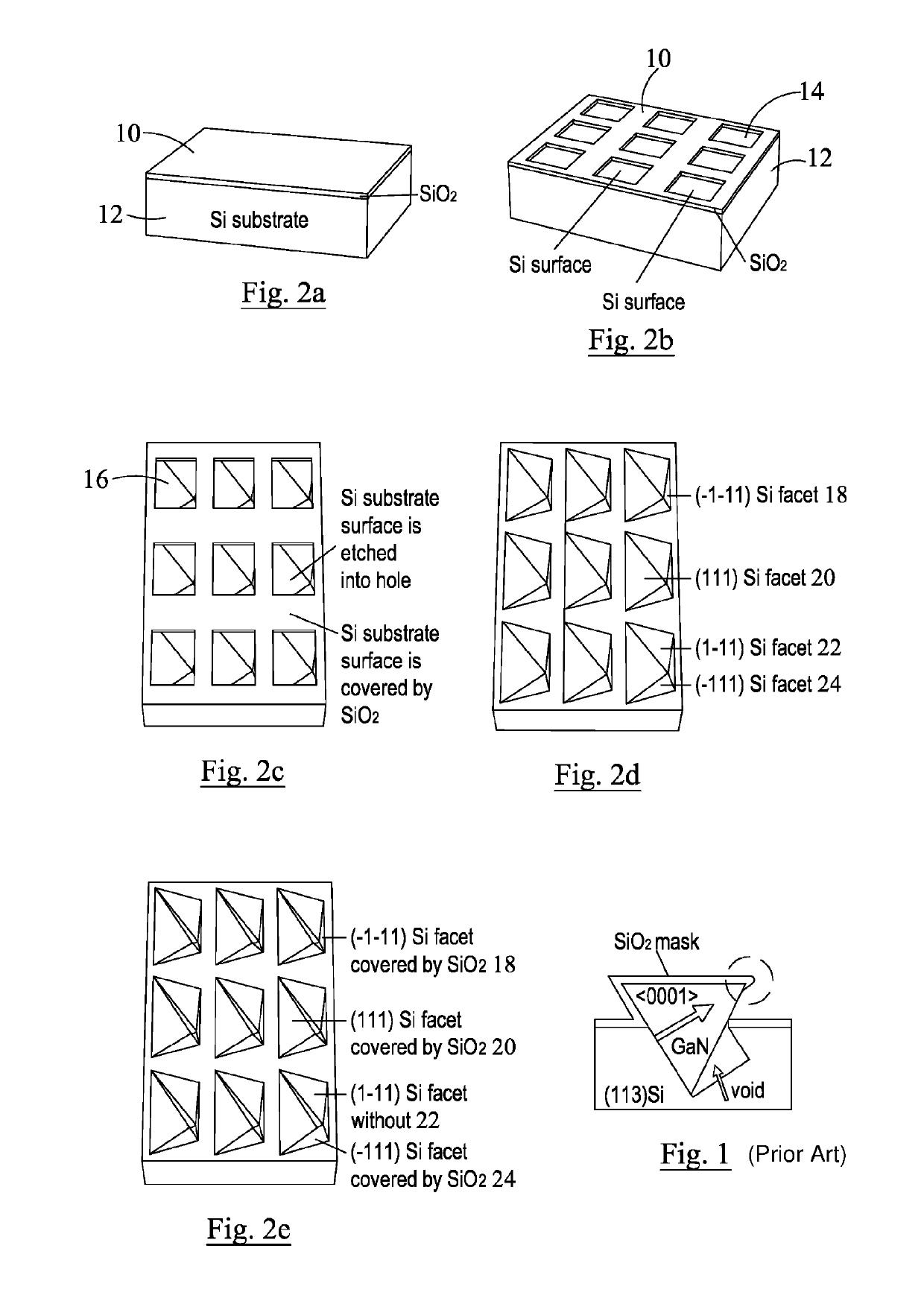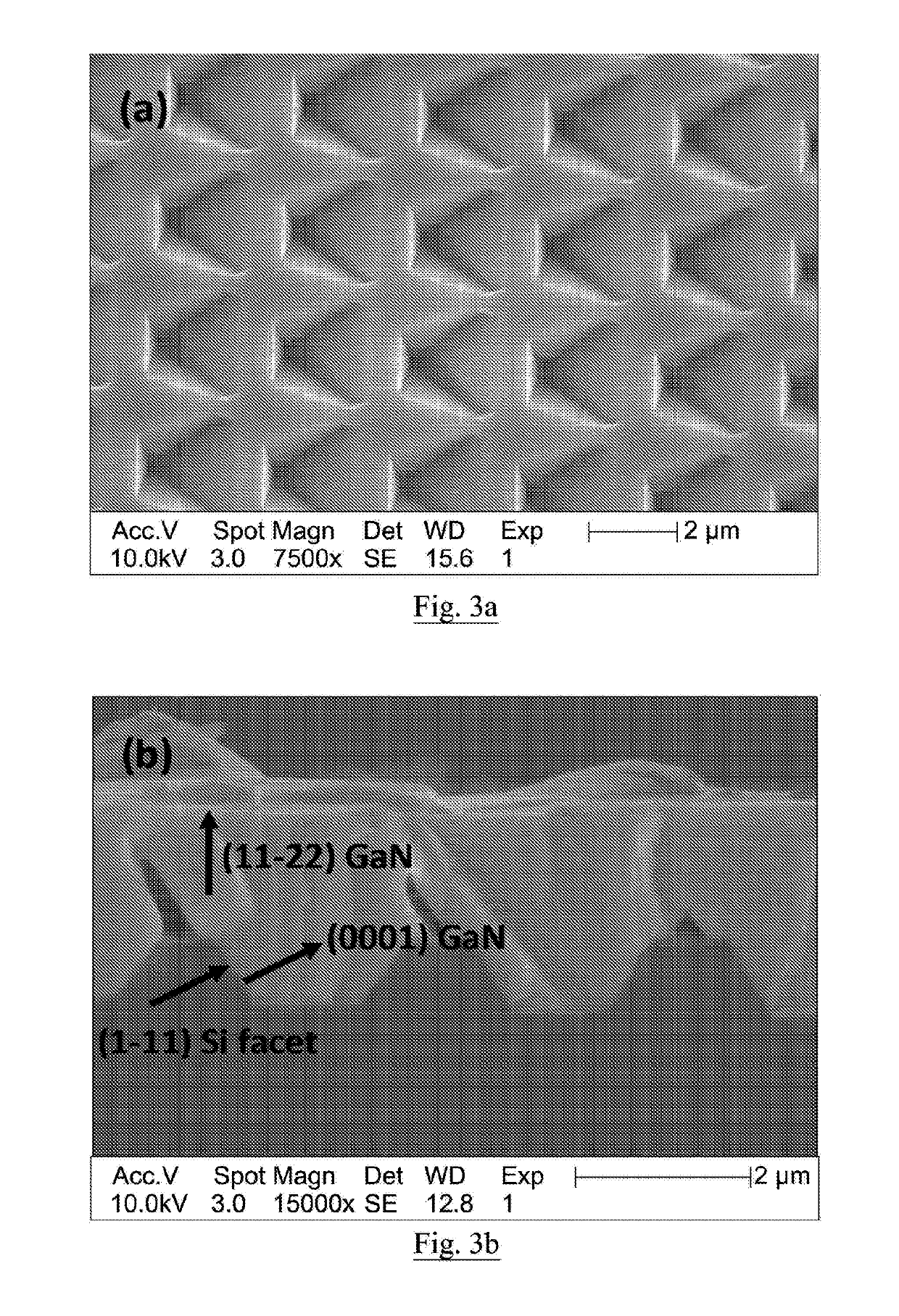Fabrication of semi-polar crystal structures
a technology of semi-polar crystal structures and crystal structures, which is applied in the direction of crystal growth process, chemically reactive gases, electrical equipment, etc., can solve the problems of piezoelectric electric fields, general illumination consumes 19% of the total energy consumption of the world, and unparallel impa
- Summary
- Abstract
- Description
- Claims
- Application Information
AI Technical Summary
Benefits of technology
Problems solved by technology
Method used
Image
Examples
Embodiment Construction
[0024]Referring to FIGS. 2a to 2e a method for the fabrication of an atomically flat (11-22) GaN template on (113) silicon will now be described. Firstly a (113) silicon substrate, i.e. a silicon substrate having a flat surface in the (113) plane of its crystal structure, is provided. As shown in FIG. 2a, a SiO2 thin film 10 is deposited on the surface of the (113) silicon substrate 12 by plasma-enhanced chemical vapour deposition (PECDV). In other embodiments the SiO2 may be deposited using electron-beam evaporator or sputtering deposition. Then, as shown in FIG. 2b, an array of windows 14, in this embodiment a regular square array of 2×2 μm size square windows (though, the window size could be smaller or larger from 500×500 nm to 10×10 μm) with a separation, of about 1 μm (though the separation could be from 100 nm to 5 μm), are opened across the whole wafer using a standard photolithography and dry etching technique (in this case reactive ion etching RIE) to etch through the SiO2...
PUM
| Property | Measurement | Unit |
|---|---|---|
| size | aaaaa | aaaaa |
| size | aaaaa | aaaaa |
| size | aaaaa | aaaaa |
Abstract
Description
Claims
Application Information
 Login to View More
Login to View More - R&D
- Intellectual Property
- Life Sciences
- Materials
- Tech Scout
- Unparalleled Data Quality
- Higher Quality Content
- 60% Fewer Hallucinations
Browse by: Latest US Patents, China's latest patents, Technical Efficacy Thesaurus, Application Domain, Technology Topic, Popular Technical Reports.
© 2025 PatSnap. All rights reserved.Legal|Privacy policy|Modern Slavery Act Transparency Statement|Sitemap|About US| Contact US: help@patsnap.com


